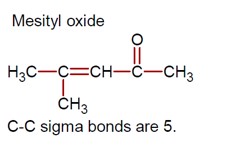Chemistry Chemical Kinetics
Get insights from 111 questions on Chemistry Chemical Kinetics, answered by students, alumni, and experts. You may also ask and answer any question you like about Chemistry Chemical Kinetics
Follow Ask QuestionQuestions
Discussions
Active Users
Followers
New answer posted
3 months agoContributor-Level 9
For the reaction C? H? → C? H? + H? , calculate the enthalpy change (ΔH).

ΔH = [Bond energy (C-C) + 6 * Bond energy (C-H)] - [Bond energy (C=C) + 4 * Bond energy (C-H) + Bond energy (H-H)]
ΔH = 347 + 2 (414) - 611 - 436 = 128 kJ/mol.
New answer posted
3 months agoContributor-Level 10
The change in entropy for the following processes is negative (ΔS = -ve), indicating an increase in order:
Water (l) → Ice (s) at 0°C
H? O (l) → Ice (s) at -10°C
N? (g) + 3H? (g) → 2NH? (g)
Adsorption
New answer posted
3 months agoContributor-Level 10
Unimolecular Reactions might seem to not participate in the collision theory due to the presence of only a single molecule. In such cases, the molecule is activated by external forces such as heat, light, electricity, or by colliding with the walls of the container. This force charges the molecule enough to break the activation barrier and result in an effective collision.
New answer posted
3 months agoContributor-Level 10
Kt = 2.303 log? (A? /A? )
K * 570 = 2.303 log? (100/32)
K = [2.303 / 570] [log?10² - log?2? ]
K = [2.303 / 570] [2 - 5 * 0.301] = [2.303 / 570] * 0.495 = 0.002 = 2.0 * 10? ³ s? ¹
Ans = 2
New answer posted
3 months agoContributor-Level 10
Industries manily select an optimal temperature which is high enough to increase the reaction rate (molecules colliding with each other at higher fequencies) and at the same time is balanced to avoid any side effect. This effectively yields high quality production without any wastage or leading to harmful results while ensuring safety of the consumers too.
New answer posted
3 months agoContributor-Level 10
For A
0.693/300 = (2.303/t) log (A? /A? )
For B
0.693/180 = (2.303/t) log (B? /B? )
Given A? = B? & A? = 4B?
Substituting & solving we get t = 900 s
New answer posted
3 months agoContributor-Level 10
To understand the phenomenon behind this, have a close look at the formula of the first order reaction.
t1/2 = 0.693/k
Here, we can see that the half life is only dependent on k (rate constant) since there is no [A]' in the formula. Hence, we can easily conclude that the half life of a first order reaction is independent of the initial concentration [A]'.
New answer posted
3 months agoContributor-Level 10
log (k? /k? ) = (Ea / 2.303R) [1/T? - 1/T? ]
log (3.555) = (Ea / (2.303R) [1/303 - 1/313]
1.268 * 8.314 * 303 * 313 = 10Ea
So, Ea = 100 kJ
New answer posted
3 months agoContributor-Level 10
k = Ae? Ea/RT
ln (K? /K? ) = (Ea/R) [1/T? - 1/T? ]
ln (5) = (Ea/8.314) [1/300 - 1/315]
1.6094 = (Ea/8.314) [15 / (300 * 315)]
Ea = 84297 J
Taking an Exam? Selecting a College?
Get authentic answers from experts, students and alumni that you won't find anywhere else
Sign Up on ShikshaOn Shiksha, get access to
- 65k Colleges
- 1.2k Exams
- 681k Reviews
- 1800k Answers

